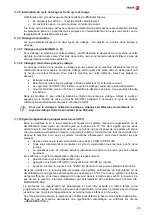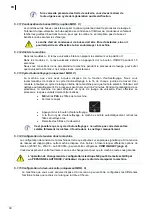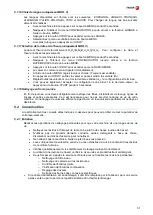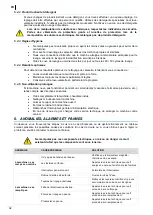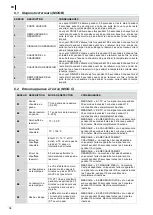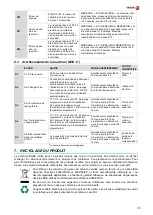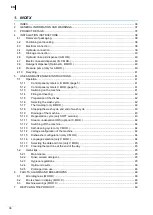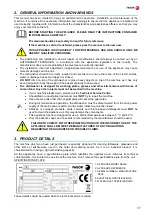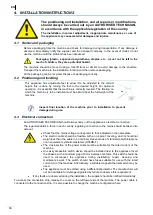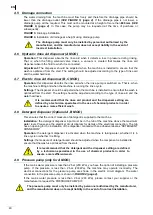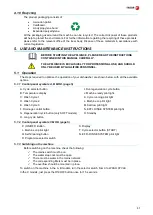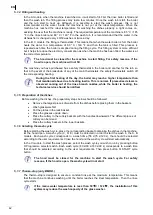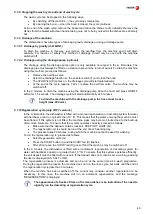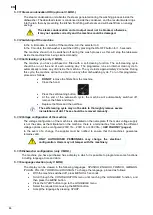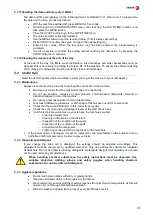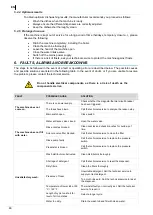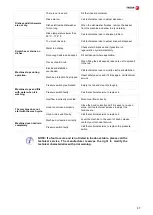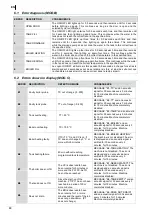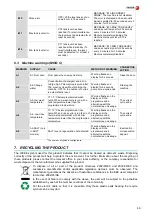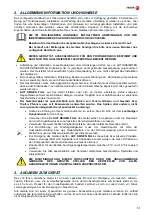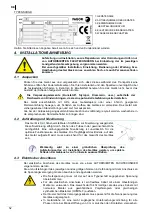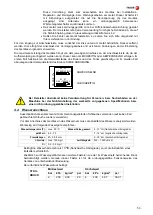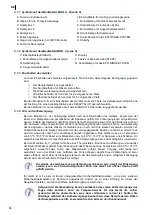
41
4.10
Recycling
The product packaging consists of:
A wooden pallet.
Cardboard.
A polypropylene band.
Expanded polyethylene.
All the packaging used around the machine can be recycled; The correct disposal of these products
will help to protect the environment. For further information regarding the recycling of these products,
please refer to the relevant office of the local body. Dispose of these materials in accordance with
current legislation.
5.
USE AND MAINTENANCE INSTRUCTIONS
BEFORE STARTING THE APPLIANCE, PLEASE READ THE INSTRUCTIONS
CONTAINED IN THIS MANUAL CAREFULLY.
THE APPLIANCE IS EXCLUSIVELY FOR PROFESSIONAL USE, AND SHOULD
ONLY BE USED BY QUALIFIED PERSONNEL.
5.1
Operation
The steps required to optimise the operation of your dishwasher are shown below, with all the available
options.
5.1.1
Control panel symbols A, B MOD. (page 5)
A. Cycle selector button
I. Run regeneration cycle button
B. Temperature display
J. Machine ready pilot light.
C. Wash Cycle 1
K. Cycle running pilot light
D. Wash Cycle 2
L. Machine on pilot light
E. Wash Cycle 3
M. Salt low pilot light
F. Drainage control button
N. EFFI- RINSE SYSTEM pilot light
G. Regeneration cycle button (only SOFT models)
O. Standby
H. Long cycle button
5.1.2
Control panel symbols C MOD. (page 5)
P. (ON/OFF) Button
S. Display
L. Machine on pilot light
T. Cycle selector button (START)
Q. Self-Cleaning button
N. EFFI- RINSE SYSTEM pilot light
R. Programme selector switch
5.1.3
Switching on the machine
Before switching on the machine, check the following:
The mains switch must be on.
The water stop cock must be open.
There must be water in the mains network.
The corresponding filters must be in place.
The overflow should be mounted in place.
To switch on the machine in the A, B models, turn the selector switch from 0 to WASH CYCLE.
In the C models, just press the
ON/OFF
button once for 1.5 seconds.



